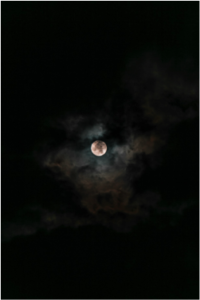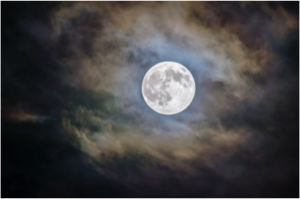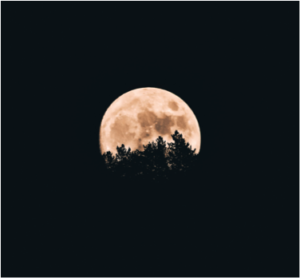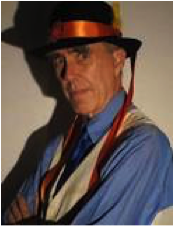In this three-part series of Breaking Ground posts, Heather Ruce invites us to work with a cycle of eight Inner Tasks. These exercises were originally designed to be used sequentially over the course of eight weeks in conjunction with daily life. Bringing one of these exercises each week into moments of the day invites us into a deeper visceral relationship with Gurdjieff’s concepts of self-remembering and self-observation as we grow in our experience with the three centers of sensation, feeling and thinking.
Available here as part of Northeast Wisdom’s intention to offer quality resources and support for the Wisdom community, these may be used in whatever way best works for you. Each task is an excellent resource for extended practice in the activities of life over time, whether you are new to Wisdom or an experienced practitioner. We began with Weeks I and II in Self-Remembering, Self-Observation and Observing the Centers: Part I of this series; here we present Part II, Weeks III, IV and V. Part III, Weeks VI through VIII will follow soon. Check out the growing collection of exercises on our Wisdom Resource page.
We welcome your comments and your own experiences of these exercises in the Comments section below.
 Week III
Week III
As mentioned before, self-remembering and self-observation go together and this week we will continue to work with these. Again, the first part of self-remembering is finding ourselves in our body in the present moment in time and space. Continue with locating sensation in your solar plexus and abdominal area adding in sensing your arms and legs as well as your body’s heft and size, noticing your feet on the ground and your vertical alignment.
As a way of locating yourself in time and space, I invite you to take 30 second pauses throughout your day to engage your five senses. Without judgment or changing anything, ask yourself what do I see? Do I smell or taste anything? What do I feel on the outside of my skin? What do I hear? Then take a moment to notice what happens in sensation in your body during and after. What happens in sensation as you engage your five senses? Is there a sensation of ease and relaxation?
We will continue to observe ourselves without judgment and without changing what is observed. We will add in Red Hawk’s third principle of self observation which is with attention on bodily sensation and a relaxed body. Although we have been working with sensation already, we are going to stay with this—it takes practice.
Red Hawk says that observing ourselves in this way frees up our attention “so that it is not captured and consumed by the body’s force of habits, but is free to choose from aim, not mood.” Most of us are at the whim of our moods which determine our attitudes and behaviors. We identify with our moods and they affect us, we are not free. He says:
Mood is like the weather—a cloud in the sky is not my concern, nor can I do anything about it but nearly observe it; likewise, mood is the inner weather, a cloud which is passing through the inner sky. It is not me, it does not need to affect me in any way, and just like the cloud, it is not any of my business or concern. Thus, for a mature soul, mood does not decide attitude. I am free to choose my attitude at any moment, regardless of circumstances internal or external.
The task this week is to remember yourself and to observe your moods without judgment, without changing what is observed, and with attention on bodily sensation and a relaxed body.
When you observe your moods as weather, with attention on bodily sensation and a relaxed body, what do you notice about the quality of presence in your intellectual center? Do you notice a clearer mind? What is the sensation of energy moving in your body like? Is it like the sky in which the weather of mood is moving through? Can you identify the sensation of the mood in your body—the “cloud which is passing through the inner sky?” What do you notice about the quality of presence in your emotional center? What feelings that arise?
 Week IV
Week IV
This week we will work with Red Hawk’s fourth principle of self observation which is ruthless self honesty. He says this means telling the truth about ourselves no matter how poorly it makes us look, otherwise “we join the mass of humanity, whose main concern is looking good in front of others.”
This kind of honesty produces humility. We all have an image of ourselves, how we see ourselves. It may be an admirable image, seeing ourselves as caring, full of integrity, intelligent, etc.; or it may be a deprecating image of ourselves as inadequate, lacking value, bad, and so on. Neither image is accurate because it is incomplete. We pretend, putting on masks in front of others to preserve or overcompensate our self-image.
Red Hawk says:
It is these habits of behavior which contradict this self-image which my lying prevents me from seeing and suffering. When I practice ‘ruthless self honesty’ I will learn what ‘voluntary suffering’ means, because I will begin to see my contradictions without lies or judgment, simply as they are in me. And I will suffer. The Work asks me to stand in this pain, doing nothing, trying to change nothing, judging nothing, simply feeling the pain totally without judging it good or bad, right or wrong. Simply stand in the pain and allow it to be sensed throughout the body. Emotional or psychological pain is energy in the body. Nothing else. The body knows what to do with the energy but only ‘when I do not interfere.’
Our task is to continue to observe ourselves without judgment, without changing what is observed, with attention on bodily sensation—a body at ease—and with ruthless self honesty. As we see our contradictions, we will engage voluntary suffering building our nervous system’s capacity to stand in the pain and allowing it to be sensed as energy in the body.
When you observe with ruthless self honesty, what do you notice about the quality of presence in your intellectual center? Do you notice a clearer mind? What is the sensation of energy moving in your body like? What do you notice about the quality of presence in your emotional center? What feelings arise?
 Week V
Week V
We have spent the last four weeks deepening our experiences of self-remembering and self-observation and will now spend the next four weeks working with trying to observe more specific things within ourselves. This time provides a great opportunity to work in this way, as there are many different energetic pulls in varying directions within our current political climate and the ever changing Covid-19 crisis.
One of the classic phenomena we can observe within ourselves is “unnecessary tension in the body,” something that Cynthia often talks about in wisdom schools. Unnecessary tension in the body is simply any tension that is not necessary to engage for the task or activity we are doing. We can observe ourselves in both small and large ways. I often observe myself with unnecessary tension in my face especially when trying to learn something challenging or in my shoulders or legs when I am doing simple tasks around the house such as cooking, cleaning or gardening. I am also noticing unnecessary tension in my body in regard to how this pandemic is unfolding.
I want to invite us not only to observe the unnecessary tension in our individual bodies but the collective body. This pandemic continues to reveal the reality of our interconnectedness that we often know but do not experience: we are one body.
It is enough to just notice the unnecessary tension in the body throughout our week as we continue with self-remembering, locating our bodies in space and time through sensation.
We will observe without judgment, without changing what is observed, with sensation, and with ruthless self honesty. Red Hawk says:
Noticing is enough. These things will tend to regulate themselves if I do not fight, judge, condemn, or interfere with them. They exist for a reason and that reason is that they served me, at some point in my life, as protection. No need to condemn them. Simply relax and notice them as they arise, without trying to ‘fix’ them or ‘do something’ about them.
He reminds us of Heisenberg’s uncertainly principle, which says: the act of observation changes the thing observed.
Although noticing/observing your own body and the collective body may be enough, may it make some room for each of us to know what is the individual path that supports what is most organizing and coherent for the whole body.
What happens in each of your centers—intellectual center, emotional center, movement center—when you observe the unnecessary tension in your individual body this way? when you observe the unnecessary tension in the collective body this way?
I invite you to share any observations you have below as you work with these tasks.
posted by Heather Ruce, May 26, 2020
 When Heather first encountered the Gurdjieff Work at a Wisdom School in 2012, something profoundly resonated in her. This part of the Wisdom lineage wove together the threads of her studies in psychology, somatic experiencing, and spirituality—grounding and enlarging them in a deep tradition and set of maps. The Gurdjieff Work and Movements have become an integral part of her life and she continues to commit to them in her ongoing practice of morning exercises, self-observation, and self-remembering, to name a few.
When Heather first encountered the Gurdjieff Work at a Wisdom School in 2012, something profoundly resonated in her. This part of the Wisdom lineage wove together the threads of her studies in psychology, somatic experiencing, and spirituality—grounding and enlarging them in a deep tradition and set of maps. The Gurdjieff Work and Movements have become an integral part of her life and she continues to commit to them in her ongoing practice of morning exercises, self-observation, and self-remembering, to name a few.
Heather contributes to the Wisdom community in many ways, most recently offering a contemplative retreat near her home in southern California entitled “An Introduction to A Wisdom Way of Knowing: What the Christian Path Has to Offer”; working as a TA for the CAC’s Introductory Wisdom School 14 week courses; offering Wisdom practice circles, lectio divina groups, ongoing Collective Pause Meditation & Practice; and currently holding the post for the ongoing the Friday morning Wisdom Meditation through Northeast Wisdom.
Heather assisted her mentor Deborah Rose Longo with the Gurdjieff movements at the Claymont Center in West Virginia in October and December 2019 during Cynthia Bourgeault’s “Mr. Gurdjieff Meet Mr. Teilhard” retreats, and has contributed to several posts on Northeast Wisdom. You may find links to those posts, her website and read more about Heather on her Wisdom Profile page.
 Red Hawk is an author, professor, poet and 30-year student of the Work under the guidance of the Gurdjieff Society in Arkansas. His books, Self Observation: The Awakening of Conscience, An Owner’ Manual and Self Remembering: The Path to Non-Judgmental Love, An Owner’s Manual, along with other books and poetry, are available at Hohm Press.
Red Hawk is an author, professor, poet and 30-year student of the Work under the guidance of the Gurdjieff Society in Arkansas. His books, Self Observation: The Awakening of Conscience, An Owner’ Manual and Self Remembering: The Path to Non-Judgmental Love, An Owner’s Manual, along with other books and poetry, are available at Hohm Press.
Image credits from the top: Moon Cycle, thanks to @SanniSahil for making this photo available freely on @unsplash; Moon with Clouds, thanks to Kenrick Mills for making this photo available freely on @unsplash; Cloudy Evening Moon, thanks to Ganapathy Kumar for making this photo available freely on @unsplash; Full Moon over Trees, thanks to @aronvisuals for making this photo available freely on @unsplash; photo courtesy of Heather Ruce; photo courtesy of Red Hawk, Good Company and The Sentinel Record.
Eight Inner Tasks:
Self-Remembering, Self-Observation, and Observing the Centers
In this three-part series, Heather Ruce invites us to work with a cycle of eight Inner Tasks. These exercises were originally designed to be used sequentially over the course of eight weeks in conjunction with daily life.


